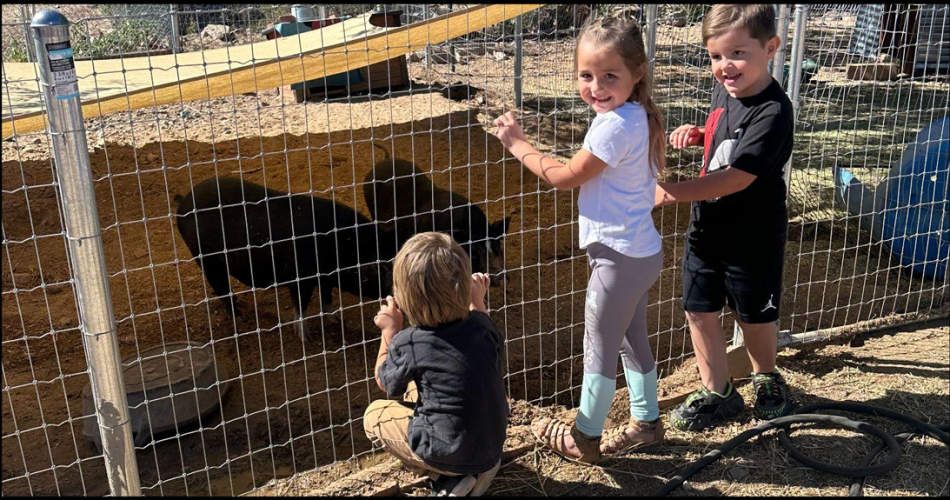As an early educator, you know young children are naturally curious about the world around them. As early educators, we can foster that curiosity and nurture a lifelong love for learning. Child-focused learning is all about noticing and following children’s interests in learning experiences. By noticing and following their interests, we can take advantage of their excitement. With this method, children are more involved, more motivated to participate and have richer learning experiences.
Patricia Kucko is the owner and director of Tricia’s Learning Center, a child care center enrolled in Quality First in the First Things First Pima South region. First Things First is Arizona’s early childhood agency and funds Quality First to help early care and education providers improve the quality of their programs.
As a Quality First participating program, Kucko and her staff are constantly on the lookout for ways to enhance learning opportunities. By watching the children’s interests and building upon them, they have made some big changes to the program. We recently caught up with Kucko for tips and real-life examples of how her program followed children’s interests and added a variety of nature-based learning experiences.
Watch and listen.
The foundation of child-focused learning is watching and listening to the children in your care. Pay attention to their interests, questions and ideas to see what they are excited and curious about.
For Kucko and her staff, it all started by noticing the children’s reaction to an animal visitor.
“We started with a visit from a goat when a family friend needed someone to keep their goat for a temporary basis. Since we had the goat, we built a small pen for it across from the playground. Just watching the goat from the playground, the children were fascinated, curious and excited! So we decided to expand and add more animals.”
Follow children’s interests.
The next step is incorporating children’s ideas into activities. Using the children’s interests as a starting point, teachers can plan new experiences using what the children are interested in.
At Tricia’s Learning Center, this approach led to some exciting new adventures in learning.
“We added new pens next to the playground with other animals. With our setup, it’s easy for the children to see the animals. There is a fence and barrier between the playground and the animal pens, but they are close enough for the children to hear their sounds and watch what’s going on. This sparks lots of conversations about what the animals eat, where they sleep and what they need. With the animals, it’s a learning cycle and a life cycle. The children were able to watch the mother goat’s pregnancy and give birth to two babies, and we now have three goats.
Based on conversations with children about what the animals eat, we added two gardens: one in the soil between the playground and the animals, and a hydroponic garden out front. “
Extend learning.
Learning experiences abound when activities start with children’s interests. Through activities, teachers can incorporate learning in multiple domains using real-life, hands-on experiences.
Kucko shared examples of how her staff have extended learning through gardening:
“We have planted the gardens based on what we learned through our work with the animals. For example, based on a child’s question, “What are you going to feed them?” we started researching what we could plant and decided to plant lettuce. We involve the children. They put their hands in the soil, look at the plants and watch to see how things grow. With gardening, there’s a lot of trial and error, especially in this climate, so we are all learning along the way.”
Kucko recognizes that her program is fortunate to have the space and the ability to follow children’s interests through on-site experiences with animals and gardening. However, she encourages fellow educators to follow children’s interests in other ways. “Even if you want to do an exploration on a smaller scale, you can follow the children’s interests and explore through videos, pictures and researching what the children are curious about. Get creative, and reach out to others for help.”
When following children’s interests, it’s important to remember sanitation, safety and supervision concerns, especially around animals that may react impulsively to children’s quick actions. For additional questions about health practices, safety and supervision, early educators can reach out to their Arizona Department of Health Services licensing representative (Compliance Officer) or their Child Care Health Consultant.
Additional Resources
For more ideas and inspiration on child-focused learning, check out these resources from around the web:
- Following Children’s Lead – Head Start Early Childhood Learning & Knowledge Center offers a 15-minute professional development module on ways teachers can follow children’s lead to support learning.
- Engaging Pre-K Learners by Following their Interests – Watch this video from Edutopia to see how one Pre-K classroom uses emergent curriculum to reach learning objectives.
- Tips on Nurturing Your Child’s Curiosity – Zero to Three offers tips for supporting curiosity with infants and toddlers.
At Quality First, we love to hear from you! Share your new and innovative practices so others can be inspired. Email us at QualityFirst@FirstThingsFirst.org
